At the beginning of the 19th century, the citizens of the ever-growing city of Pest really needed a place where they could hold theatre performances and dance parties (the latter were particularly important stages of the social life of the time), and of course, a concert hall and event hall were also needed. Of course, at a suitable architectural standard.
The site was already landscaped at the end of the 18th century, the area of the northern roundel, i.e., the bastion that once protected the city (the area between today's Vörösmarty Square and the Danube) seemed ideal for the complex of buildings serving entertainment. The plan was to build a theatre on the part of the plot facing the city, and an entertainment building on the side of the river. The two buildings were therefore designed together, albeit after a long delay. First, János Schilson submitted plans, but in 1790, Leopold II was dissatisfied with them, then the ideas of the court architect Franz Anton Hillebrandt, and later József Hild, were rejected.
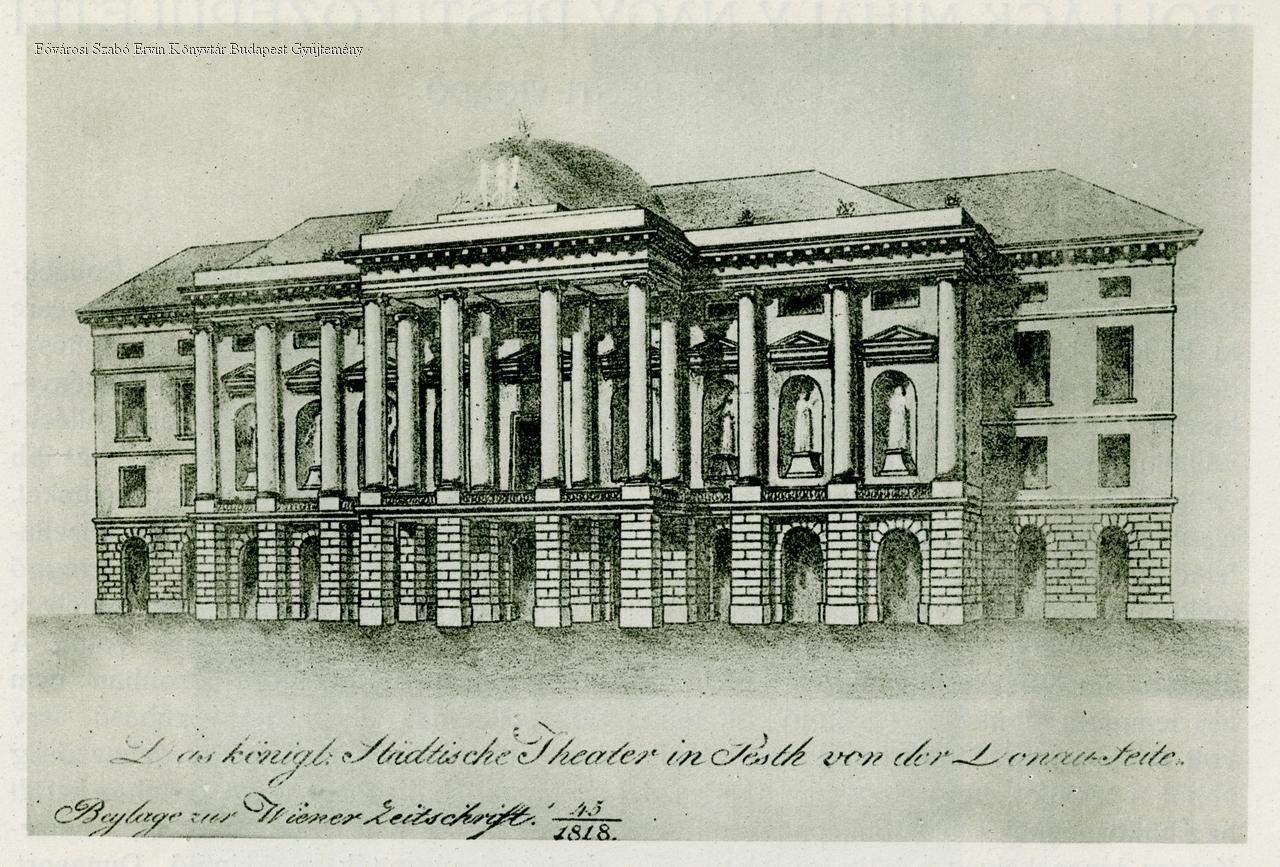
Aman's version of the plan for the theatre on today's Vörösmarty Square side (Source: FSZEK Budapest Collection)
The plans were finally drawn up by the Viennese Johann Aman on behalf of the king, Francis I. Not only for the theatre but also for the ballroom planned to build behind it, facing the Danube. The theatre was built between 1807 and 1812 according to Aman's plans, but for the ballroom, only the foundations of it were completed. The money ran out, but the execution was also hampered by the fact that Aman was offended. He was jealous of his assistant from Pest, Mihály Pollack, and for this reason, he was no longer interested in construction projects in Pest, even though his plans for the construction of the ballroom were actually ready.
The situation was finally resolved by Palatine Joseph, who, on the one hand, got the necessary money and on the other hand, revised the plans of the Redoute, the new plans were drawn up by Mihály Pollack. Thus, according to the ideas of the Hungarian architect, the construction work of the Redoute began in 1829. The building was ready by the summer of 1832, but the opening was delayed to the ball season of 1833.
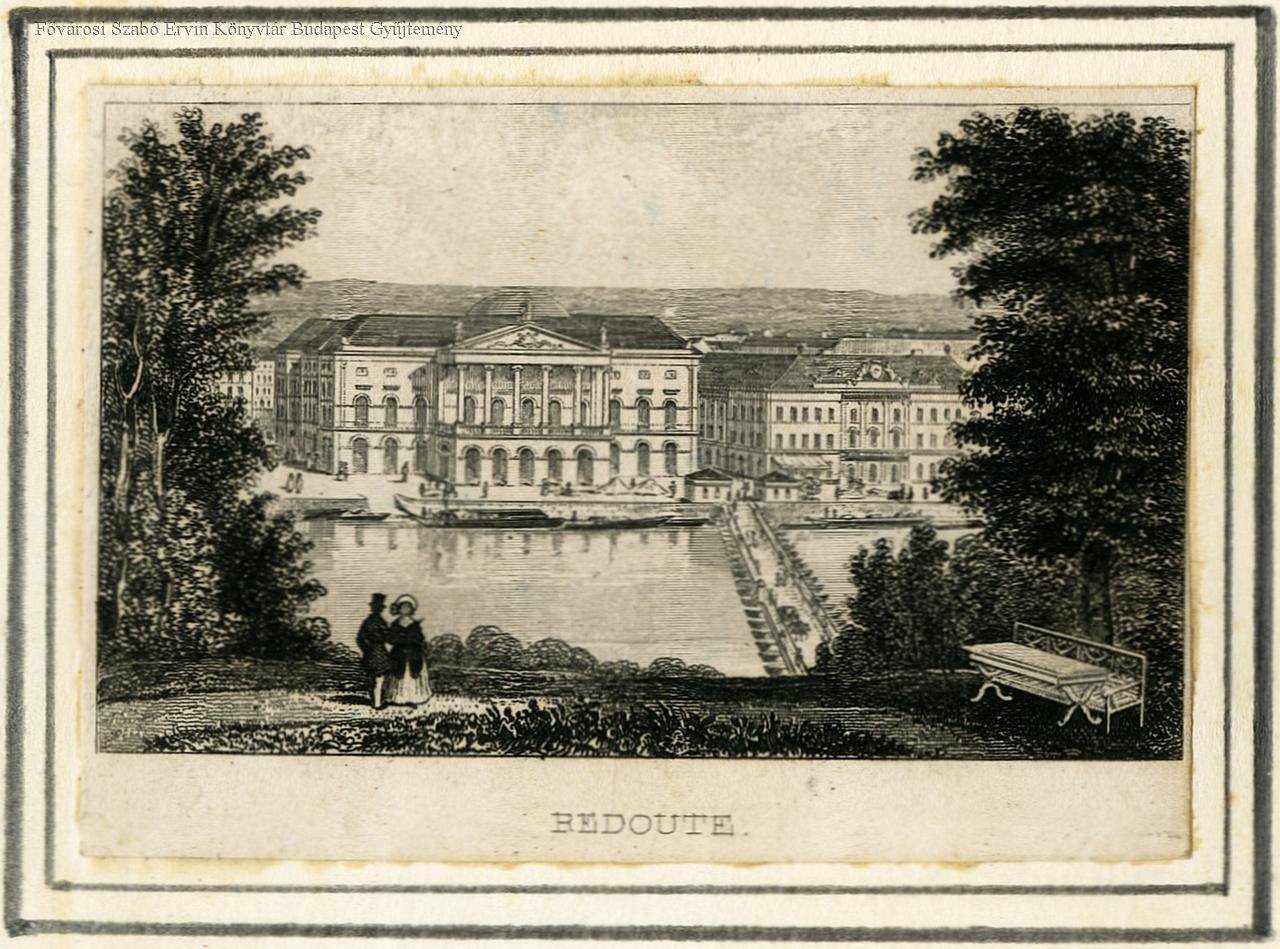
The building was located directly at the Pest bridgehead of the pontoon bridge (Source: FSZEK Budapest Collection)
Back in 1802, 283,000 HUF was earmarked for the construction, but in the end, the sum reached over one million. Even the original amount was huge, one million was considered astronomical at the time, so no savings were made on the new ballroom. There were shops and a café on the ground floor of the building. The large ballroom was 43 metres long and 18.9 metres wide, its walls were covered with marble, and the lighting was provided by so many candles that no separate heating was needed in winter. The 710 candles were carried by two huge, 3-metre chandeliers and two additional chandeliers, as well as 12 wall sconces, and the light was scattered by 160 mirrors. The dining rooms connected to the ballroom and the patisserie were furnished with gilded furniture, no less brightly.
Péter Fischer won the operation for 3 years, and he announced to the general public that the new ballroom would open on Sunday, 13 January 1833 with a grand ball. The operator wrote about the hall in the 5 January 1833 issue of Jelenkor:
"The local beautification commission has done everything, that can be done to decorate in terms of construction pleasure, splendour, and rich ornamentation. So much so that there are only a few similar ones in Europe, and it is one of a kind in the Austrian Empire."
Tickets for the ball cost 1.20 HUF in advance and 1.30 HUF on the day of the ball, starting at noon that day. They could be bought at the tenant's pastry shop, Károly Emmerling's coffee house, and in Buda at Jakab Grosz's spice shop. The dance started at 9 p.m.
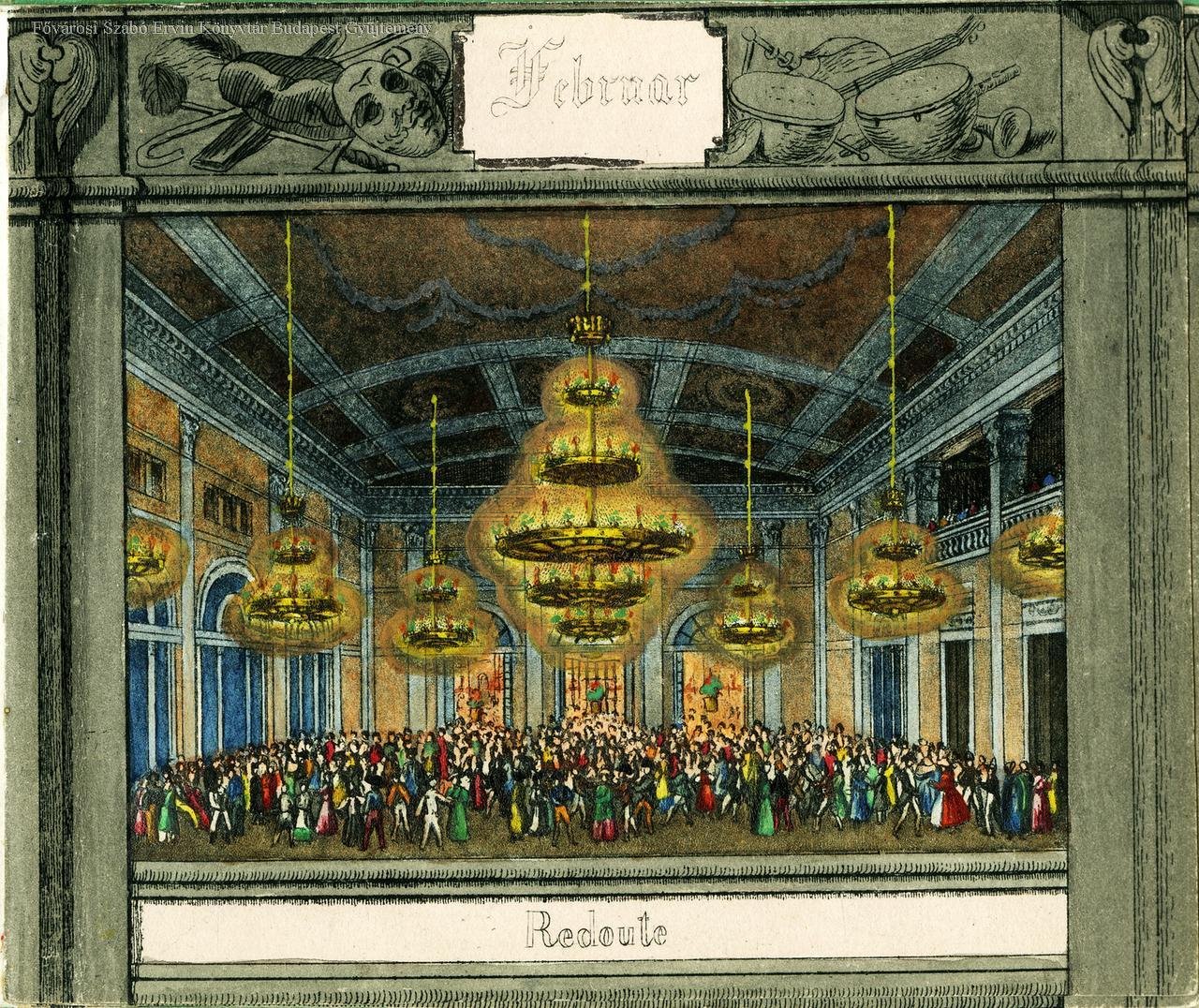
The shining interior of the ballroom as depicted by Károly Schwindt (Source: FSZEK Budapest Collection)
The Redoute was one of the most successful pieces of Hungarian classicist architecture, with its beautiful proportions and ornate interior spaces, it presented a truly imposing sight. After its opening, it hosted balls, concerts and other social events. Ferenc Liszt, Johann Strauss the Elder, and Henri Vieuxtemps also performed here.
In 1839, Ferenc Liszt gave a concert for the first time for the flood victims of Pest, with great success. It was here that Liszt played the Rákóczi March for the first time, and the composer had one more innovation: he insisted that the tickets be printed only in Hungarian. Ferenc Liszt gave a concert in the building later as well.
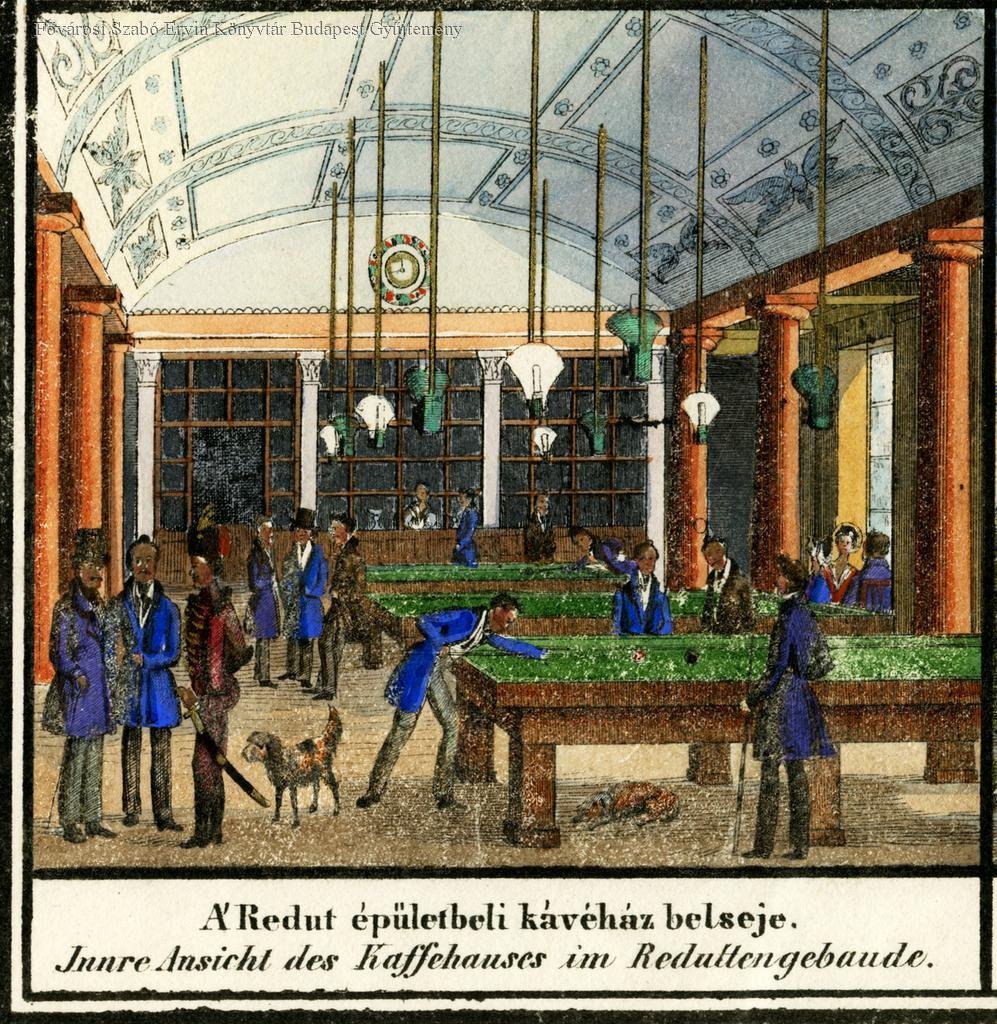
The café in Carl Vasquez's engraving (Source: FSZEK Budapest Collection)
The building took on a different role in 1848, as the People's Representative National Assembly was convened in Pest. Although the construction of a state house in Pest had been on the agenda for a long time, it was not completed, so the representatives met in the Redoute, as it was of the right size, and therefore in the summer of 1848, the representatives gathered here and voted on the laws that the War of Independence they were needed to win, including the force development plan requested by Kossuth.
This role partly caused the loss of the building. When Artúr Görgey's troops besieged the Buda Castle in May 1849, the Austrian general Hentzi - in revenge, to disturb the besiegers - started shooting Pest and targeted the Redoute building, taking revenge on the "rebel parliament" by destroying their place, despite the fact that the ballroom was "a civilian building". The building was destroyed along with the row of palaces in Pest, but Hentzi wanted to be safe and shot the rest on 15 May 1849.
On the site of the Redoute, which was destroyed in 1849, the construction of the new hall began only in 1859 according to the plans of Frigyes Feszl, and in 1865 the Vigadó of Pest known today was opened.
Cover photo: The Redoute (Source: FSZEK Budapest Collection)

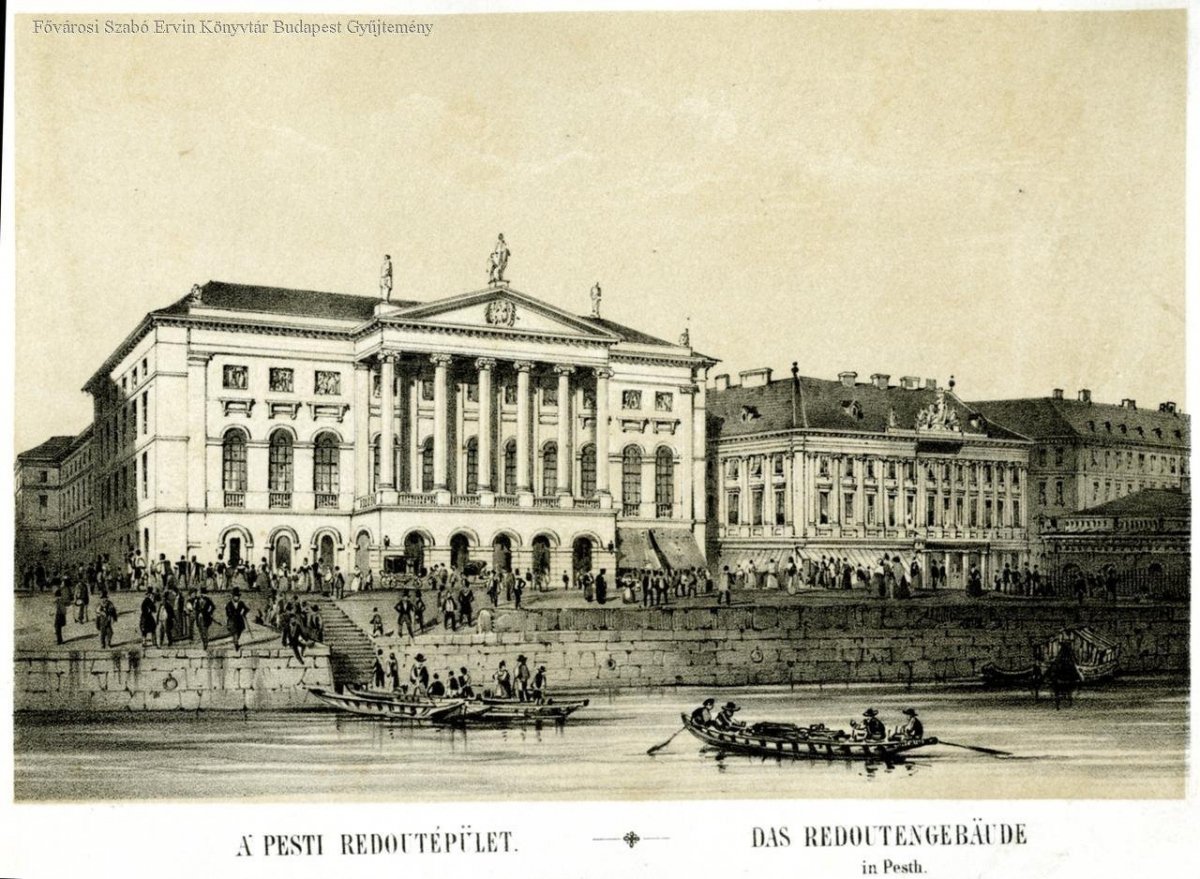


































Hozzászólások
Log in or register to comment!
Login Registration